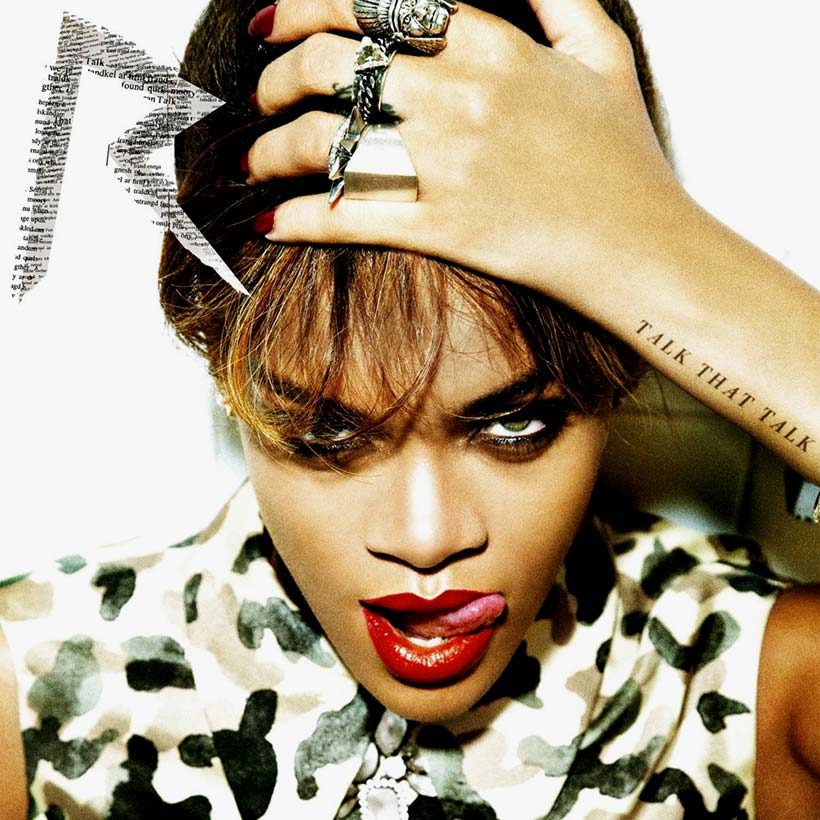‘Talk That Talk’: When Rihanna Got Her Freak On
With her ‘Talk That Talk’ album, Rihanna continued her reign over pop music, throwing genre and romantic conventions to the wind.

To label Rihanna a risk-taker is quite the understatement – especially by the time her sixth studio album, Talk That Talk, arrived, on November 21, 2011. Just a year on from the success of Loud, Rihanna was ready to continue her pop reign. And, as with her previous releases, the cover art set the tone for the album, with Rihanna staring defiantly back at the camera, licking her lips like the cat who got the cream.
Buy Rihanna’s Talk That Talk on vinyl now.
Love, sex, repeat
Rihanna has always been a hit-machine, but Talk That Talk rolls those stand-out moments into one of her most cohesive albums: love, sex, repeat. Sure, it’s not a novel concept, but she takes you with her along every stage of the relationship. Bridging the gap between her past and her present, the album opens with “You Da One.” a song that sounds like dreamy echo, a glimmer of her previous record that was left playing until this one picks up.
Immediately from the opening verse, “Baby I love you, I need you here/Give me all the time,” you can hear Rihanna experimenting with her vocal delivery and leaning into the trap-pop vocal that was just starting to emerge. In the accompanying video, she’s dressed a Droog from the 70s cult classic A Clockwork Orange, and channeling the same manic energy of the film.
Dissolving boundaries
On Talk That Talk, Rihanna continues to dissolve boundaries between R&B, hip-hop, and house music. She comes straight out of the gates with two EDM cuts, “Where Have You Been” and the lead single “We Found Love,” which would launch DJ and producer Calvin Harris into the stratosphere. Like “Umbrella,” “We Found Love” takes a deceptively simple hook and turns it into a chart gold through repetition and Rihanna’s ecstatic vocal performance.
While most pop stars were slightly timid about embracing the emerging wave of trap music, Rihanna fully embraced the genre’s attitude and swagger, as can be heard on the album’s collaborative title track, which features a guest spot from her former mentor, Jay Z. At the same time as hip-hop was embracing its sensitive side, Rihanna was suffusing her music with subversive sexuality and man-eating abandon.
A new sonic direction
Sounding a bit disjointed compared to her usually polished sound, “Talk That Talk” indicated a new sonic direction for Rihanna. In fact, most critics were jarred by the album as a whole, feeling that it was too raw and, perhaps, too short. In many ways, however, Talk That Talk was in step with the way music is consumed in the modern era. Even as a full-length album, it replicated the brevity of hip-hop mixtapes and EPs, ultimately foreshadowing the streaming culture that would soon dominate the landscape.
Rihanna leans into the explicit wordplay on “Cockiness (Love It),” declaring herself “queen of your body parts”. That moment is outdone by the interlude-length track “Birthday Cake,” which furthers the singer’s sexual agenda. By this time, Rihanna had amassed enough of a catalog to be self-referential: “Roc Me Out” plays as an answer track to “Rude Boy.” while “Watch N’ Learn” works as a dancehall call back to her early albums.
But for all her dancefloor outings, she throws in a few curveballs on Talk That Talk, from the earnest, guitar-driven “We All Want Love” to the moody, The xx-sampling “Drunk On Love.” She ends Talk That Talk, with a bombastic send-off in the shape of “Farewell,” but it was clear that Rihanna would have much more to say…












